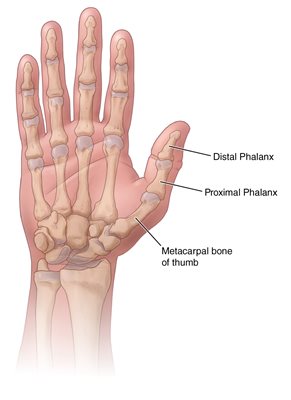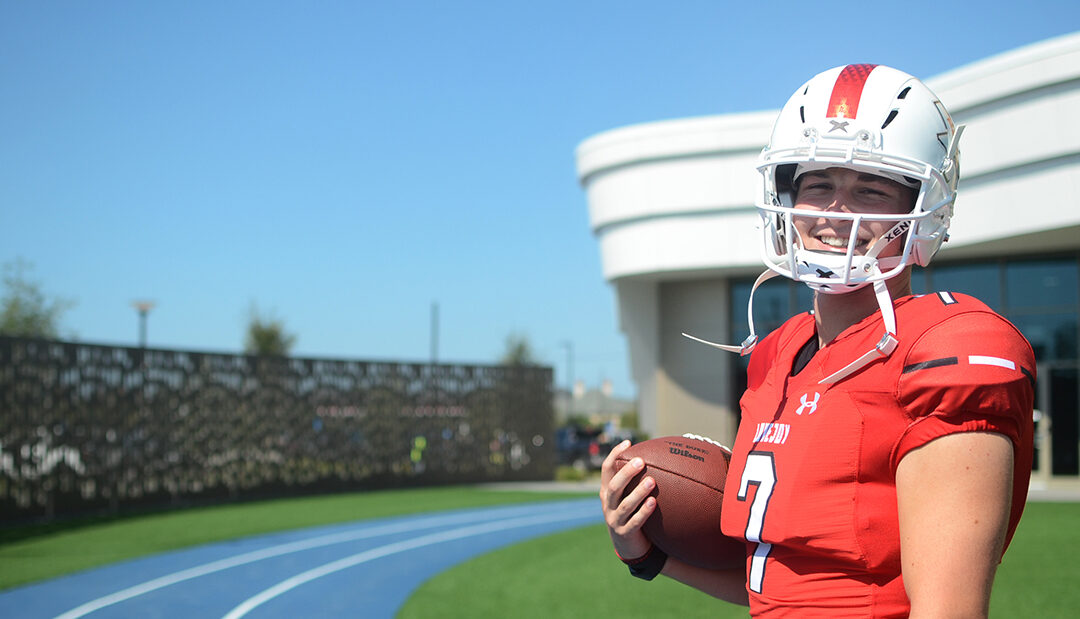Pediatric nurse practitioner Courtney Schneidau, P.A.-C., shares information about thumb fractures and how to handle these types of injuries in young athletes.
Anatomy of the thumb
The thumb is made up of two major bones — the distal phalanx and the proximal phalanx. The distal phalanx starts at the tip of the thumb, underneath the fingernail and extends to the knuckle. The proximal phalanx runs from the knuckle to the base of the thumb, where it connects to the hand.
How do thumb fractures typically occur?
A thumb fracture can occur anywhere in the thumb and is generally caused by a direct trauma, like from a fall or a hit to the hand. For example, if a player hits his hand/thumb on the helmet of another player while playing football.
What are the main symptoms of a thumb fracture? How do you know if the injury needs medical attention?
Symptoms can include:
– severe pain
– swelling and tenderness
– limited motion or inability to move the thumb
– visible deformity or deformed appearance
– a numb sensation or coldness in the thumb

You should seek medical attention if you are experiencing pain, bruising or swelling. It is important for a professional to examine the injury to determine the best course of treatment.
How is a thumb fracture diagnosed and treated?
Your provider will take a detailed history, including the activity that caused the injury, as well as perform a physical exam. X-rays of the hand and injured thumb will be performed to better evaluate the injury and rule out other injuries.
A fractured thumb can be treated through casting or the use of splints, which limit movement while the bones heal. Surgery is sometimes needed, depending on the location of the break. There are different techniques that are used to hold the bones in place, including the use of pins, plates or screws. Following surgery, a splint or cast is worn to ensure proper healing.
What is the outcome following a thumb fracture?
Thumb fractures generally have good outcomes, following proper treatment and rehabilitation. Once the fracture has healed, hand therapy may be required to help restore motion.
Should you see a pediatric orthopedic specialist for a potential thumb fracture?
Scottish Rite for Children treats children who need complex reconstruction following trauma or have hand disorders related to neurological conditions or nerve injuries. That includes fractures (shoulder to fingers), nerve injuries, tendon injuries and complex injuries. Our Sports Medicine team treats the comprehensive needs of athletes and provides management for sport-related injuries and conditions. Young and growing athletes are highly competitive and have unique conditions that require care by a pediatric team of experts. Learn more about our centers for excellence in Sports Medicine and Hand and how board-certified pediatricians, pediatric orthopedic surgeons, physical therapists, athletic trainers, psychologists and other specialists work side-by-side with each patient and their parents to develop the best game plan for treatment, rehabilitation and safe return to sport.
Learn more about our Facture Clinic.

